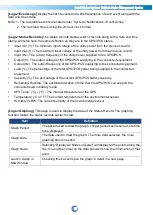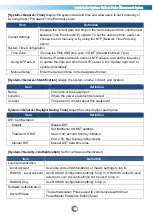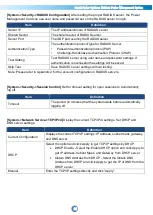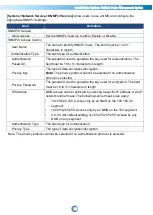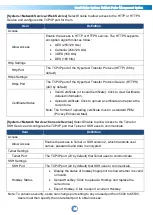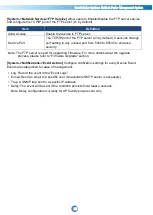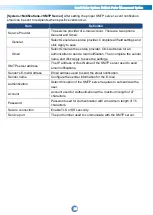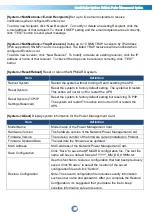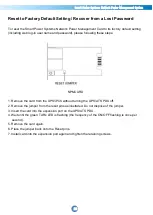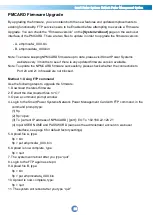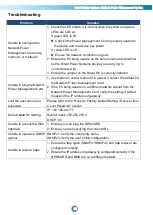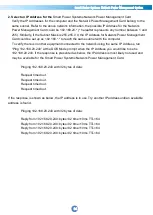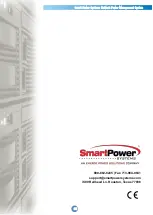
Smart Power Systems Network Power Management System
27
[System->Notifications->E-mail Recipients]
Set up to five email recipients to receive
notifications when configured Events occur.
To add a new
recipient, click “New Recipient”. To modify or delete an existing Recipient, click the
e-mail address of that recipient. To check if SMTP setting and the email recipients are set correctly,
click “TEST” button to send a test message.
[System->Notifications->Trap Receivers]
Setup up to 10 NMS TRAP receivers by IP address
(IPv6 supported). SNMPv1 and v3 is supported. The listed TRAP receivers will be notified when
configured Events occur.
To add a new receiver, click “New Receiver”. To modify or delete an existing receiver, click the IP
address or name of that receiver. To check if the traps can be received correctly, click “TEST”
button.
[System->Reset/Reboot]
Reset or reboot the NPMCARD system.
Item
Definition
Reboot System
Restart the system without turning off and restarting the UPS.
Reset System
Reset the system to factory default setting. The system will restart.
This action will not turn off or restart the UPS.
Reset System (TCP/IP
Settings Reserved)
Reset the system to factory default setting but reserving TCP/IP.
The system will restart This action will not turn off or restart the
UPS.
[System->About]
Display system information for the Power Management Card.
Item
Definition
Model Name
Model name of the Power Management Card.
Hardware Version
The hardware version of the Network Power Management Card.
Firmware Version
The revision number of the firmware current installed on Product.
Firmware Updated Date
The last date the firmware was updated.
MAC Address
MAC address of the Network Power Management Card.
Save Configuration
Click “Save” to save the NPMCARD configuration file. The text file
name will have a default format of YYYY_MM_DD_HHMM.txt.
Restore Configuration
Use this function to restore a configuration that had been previously
saved. Click “Browse” to select the location of the saved
configuration file and click “Submit”.
Note: The saved Configuration file includes security information
such as user name and password. After you complete the Restore
Configuration, it
’s suggested that you delete the file to keep
sensitive information safe and secure.





